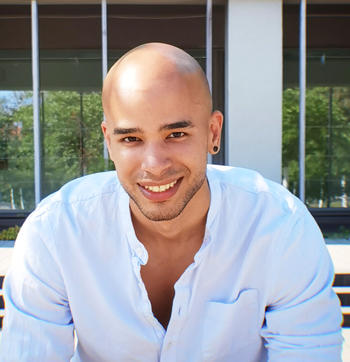Tony Carricarte

Neural Dynamics of Visual Cognition
PhD Candidate
Room JK 25/222b
14195 Berlin
I joined the group in January 2020 for a two-month lab rotation, and then I decided to continue my PhD journey here. During my studies, I completed a Bachelor's in Biology at the University of Havana in 2015 and worked for two years at the Cuban Center for Neurosciences. Following that, I enrolled in the Neurasmus master program in 2017 and, after two years, obtained a double degree in Neuroscience from the Universities of Göttingen and Bordeaux. Currently, I'm a PhD student funded by the Einstein Center for Neurosciences until October 2022. Additionally, I am part of the graduate school at the Bernstein Center for Computational Neuroscience.
For a more detailed information, please see my CV.
General research interests
I am very interested on the neural basis of conscious perception or what other researchers call “Qualia”. Based on theories of recurrent processing, I investigate the mechanism of perception and visual imagery. My PhD topic focused on the feedforward and feedback processing in the human visual cortex using lamina-resolved MRI and multivariate pattern analyses (MVPA).
Research projects
What we perceive results from the integration of bottom-up/feedforward and top-down/feedback information. But how do these representations occur in the absence of visual inputs such as in mental imagery?
In my first project, I used lamina-resolved fMRI to investigated the mesoscale level of cortical organization of feedforward and feedback signals within high-level ventral visual cortex during imagery and perception. For this, I relied on the laminar dissociation of feedforward and feedback connections found in the primary visual cortex (V1). While feedforward projections target primarily the middle layers, feedback projections arrive in superficial and deep layers.
In my second project, I am currently investigating the laminar dynamics during object perception. Here, I use lamina-resolved fMRI and EEG data along with MVPA to resolve in space and time the feedforward and feedback information flow in the ventral visual cortex, particularly in V1 and the lateral occipital complex. As a side question, I am interested in exploring the representational content at the mesoscale level of cortical organization using lamina-resolved fMRI data and deep neural networks.
Student supervision & opportunities
If you are interested in a small internship or completing your bachelor/master thesis with us, I would be happy to discuss potential research projects.